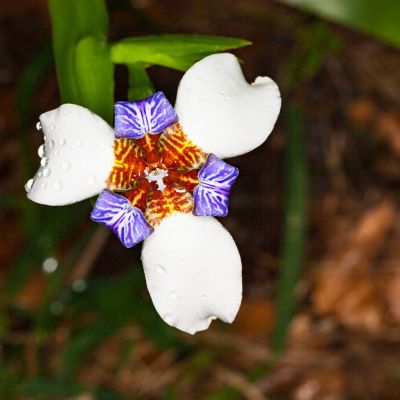This exotic-looking plant with its graceful sword-like foliage has white, yellow or blue flowers that resemble a cross between those of an orchid and an iris. Although they are short lived, lasting only a day, numerous blooms continue to follow over an extended period of time throughout spring, summer and fall. Growing walking iris plants is a great way to enjoy these interesting flowers.
Walking Iris Plants
So what makes this plant so unusual, and how did it acquire its name? Well, because of its habit of propagating itself, the iris appears to “walk” throughout the garden as it fills the area with additional plantlets. When the new plantlet is formed at the tip of the flower stalk, it bends to the ground and takes root. This new plant then repeats the process, thus giving the illusion of walking or moving about as it spreads. The walking iris is also called the fan iris for the fan-like growing characteristic of its leaves. In addition, the plant has been referred to as the Apostle plant because there are usually twelve leaves in a fan — one for each apostle. Most Neomarica will not bloom until the plant has 12 leaves. Two of the most commonly grown species of walking iris include N. caerulea, with vibrant blue flowers having brown, orange and yellow claws, and N. gracilis, with stunning blue and white flowers.
How to Grow a Neomarica Walking Iris
If you’re curious about how to grow a Neomarica walking iris, it’s fairly easy to do. In addition to propagating itself, the walking iris can be easily propagated through division of offsets or by seed in spring. Both are relatively easy, and flowering usually occurs within the first season. Rhizomes can be planted in the ground or pots just beneath the soil. Walking iris grows best in moist, well-draining soil in areas with light to full shade but will also tolerate some sun as long as it receives adequate moisture. It is hardy in USDA plant hardiness zones 10 and 11, but has been reported to grow as far north as Zone 8 with adequate protection during winter. In colder zones, this plant needs to come inside for the winter. Therefore, growing walking iris in containers is helpful.
Caring for Neomarica Iris
In regards to walking iris care, the plant itself requires little in the way of maintenance with exception of providing plenty of moisture. You should water your walking iris regularly during its active growth. Allow the plant to go dormant in winter and limit its watering to once monthly. You can feed the plant every two weeks with a water soluble fertilizer in the summer, or use a granular slow release fertilizer annually in early spring as part of your walking iris care. Adding an ample amount of mulch will help with retaining moisture in the soil and insulating plant roots. This will also help with winter protection in suitable areas. Blooms of walking iris plants can be removed once flowering has stopped and the stems can be cut back in fall as well. Since walking iris tolerates a wide range of soil and light conditions, this hardy plant is quite versatile in the garden. Walking iris plants make an excellent accent along natural paths and pond edges. They look great when massed together and can be used as a taller ground cover in the shade. Walking iris can also be used in borders, beds and containers (even indoors).
